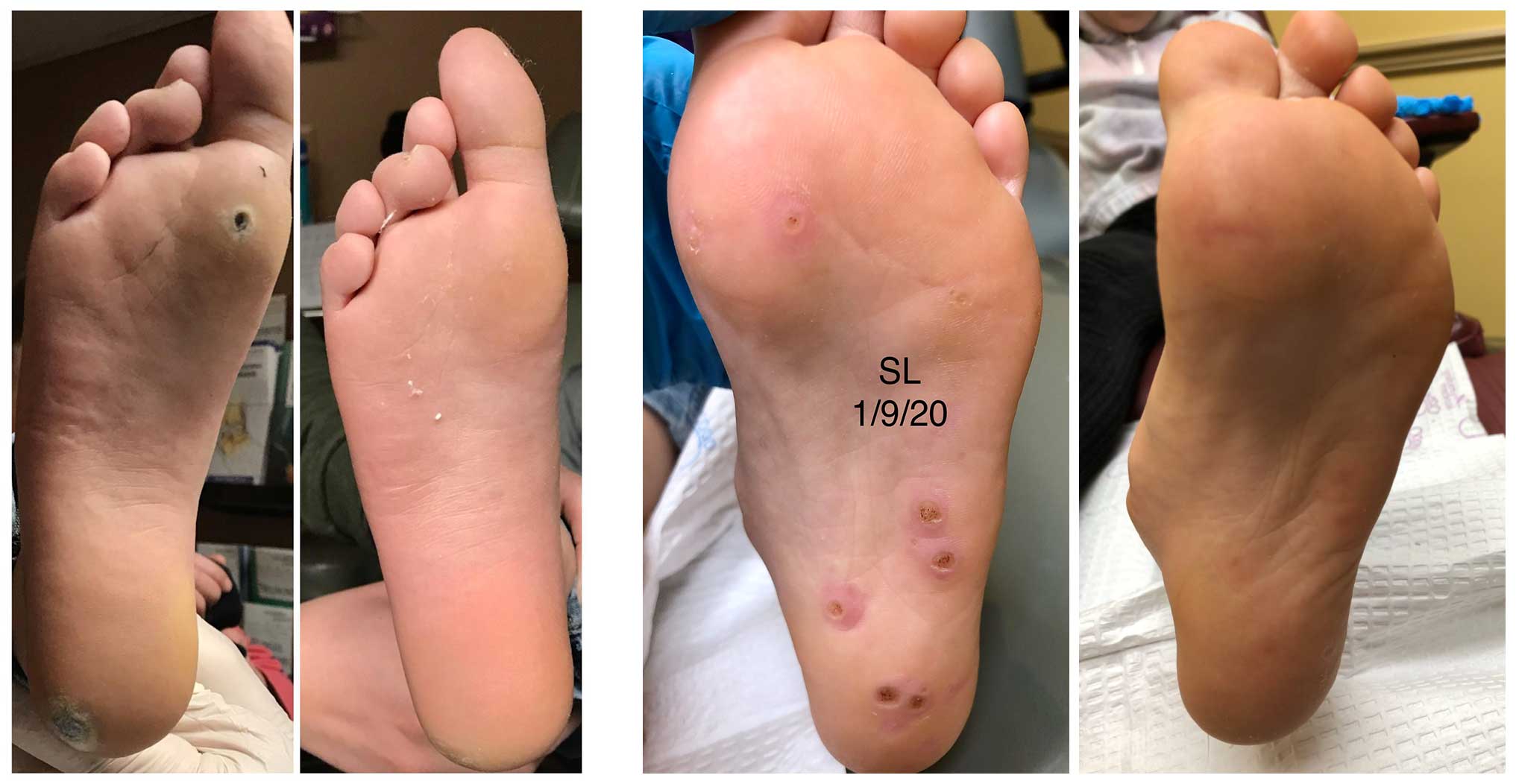Dying Plantar Wart Pictures: How do you Know if a Plantar Wart is Dying
Are you worried that a plantar wart may be about to die? It can be difficult to tell for certain, as many of the signs are quite subtle. To make your task easier, in this blog post we’ll take an in-depth look at dying plantar wart pictures and all the signs you should watch out for if you think your plantar wart might be dying. We’ll also discuss some effective treatments and preventive measures that can help reduce your chances of developing another plantar wart. By being informed on these topics, you can better understand how to identify a dying plantar wart and keep it from returning again in the future.
Symptoms of Plantar Warts
Plantar warts can be a frustrating and uncomfortable condition to deal with. These warts, caused by the human papillomavirus (HPV), typically present as small, fleshy bumps on the soles of the feet. They can be difficult to differentiate from calluses or corns, but there are a few key symptoms to watch out for. If you notice a small, rough bump on the bottom of your foot, with tiny black dots in the center and a painful, tender spot when you walk or stand, you may have a plantar wart. It’s important to seek treatment as soon as possible, as untreated warts can spread and become more difficult to treat over time. With the help of a medical professional, you can effectively treat and manage the symptoms of plantar warts.
What Causes Plantar Warts to Die
Plantar warts can be an unpleasant and painful condition, but fortunately, they do not last forever. When it comes to what causes them to die, there are a few factors that can contribute. Treatment options such as freezing or applying a topical medication can help to kill the virus that causes the wart to grow. In addition, the immune system can also play a role in getting rid of plantar warts. If the body is able to fight off the virus, the wart may eventually die on its own. It is important to seek out proper treatment and take measures to prevent the spread of plantar warts, such as wearing shoes in public places and avoiding picking at the affected area.
Diagnosis and Treatment Options for Dying Plantar Warts
Plantar warts can be a frustrating and persistent issue for those affected. While they’re not typically harmful to one’s overall health, they can certainly cause discomfort and embarrassment. Luckily, there are a variety of treatment options available to rid oneself of these pesky growths. Some options include over-the-counter medications, which work by dissolving the wart, or liquid nitrogen treatments, which freeze the wart and allow it to eventually fall off. For more severe cases, surgical options such as laser therapy or excision may be necessary. It’s important to consult with a healthcare professional to determine the best course of action for your specific case of plantar warts. With the right diagnosis and treatment plan for dying plantar wart, relief and healthier feet can be achieved.

Dying Plantar Wart Pictures
Prevention Methods to Avoid Getting Plantar Warts in the First Place
Plantar warts can be pesky and painful, causing discomfort and embarrassment for those who suffer from them. However, the good news is that there are many effective prevention methods to avoid getting plantar warts in the first place. One important step is to always wear shoes or sandals in public places, like swimming pools, locker rooms, and communal showers. This can help prevent the spread of the virus that causes plantar warts. Additionally, avoiding sharing towels or other personal items with others is key. Keeping your feet clean and dry, and avoiding prolonged exposure to moisture, is also crucial. By following these simple prevention methods, you can greatly reduce your risk of developing plantar warts and keep your feet healthy and happy.
Photos of Dying Plantar Warts
Plantar warts are a common skin condition caused by the human papillomavirus (HPV). Although not typically harmful, they can be unsightly and uncomfortable. In some cases, plantar warts may go away on their own, but if they persist, seeking treatment is recommended. One way to track the progress of treatment is through photos of the warts. While it may be uncomfortable to take pictures of one’s own warts, doing so can provide valuable information to a healthcare provider. By documenting the size, color, and location of the warts over time, a provider can determine if the treatment is working or if a different approach is necessary. It’s important to note that taking photos of plantar warts should only be done with the guidance of a healthcare professional.
Flagstaff Foot Doctors: Anthony Rosales DPM
https://www.google.com/maps?cid=8835841318590452161
421 N Humphreys St, Flagstaff, AZ 86001, United States
(928) 774-4825
https://flagstafffootandankle.com/
